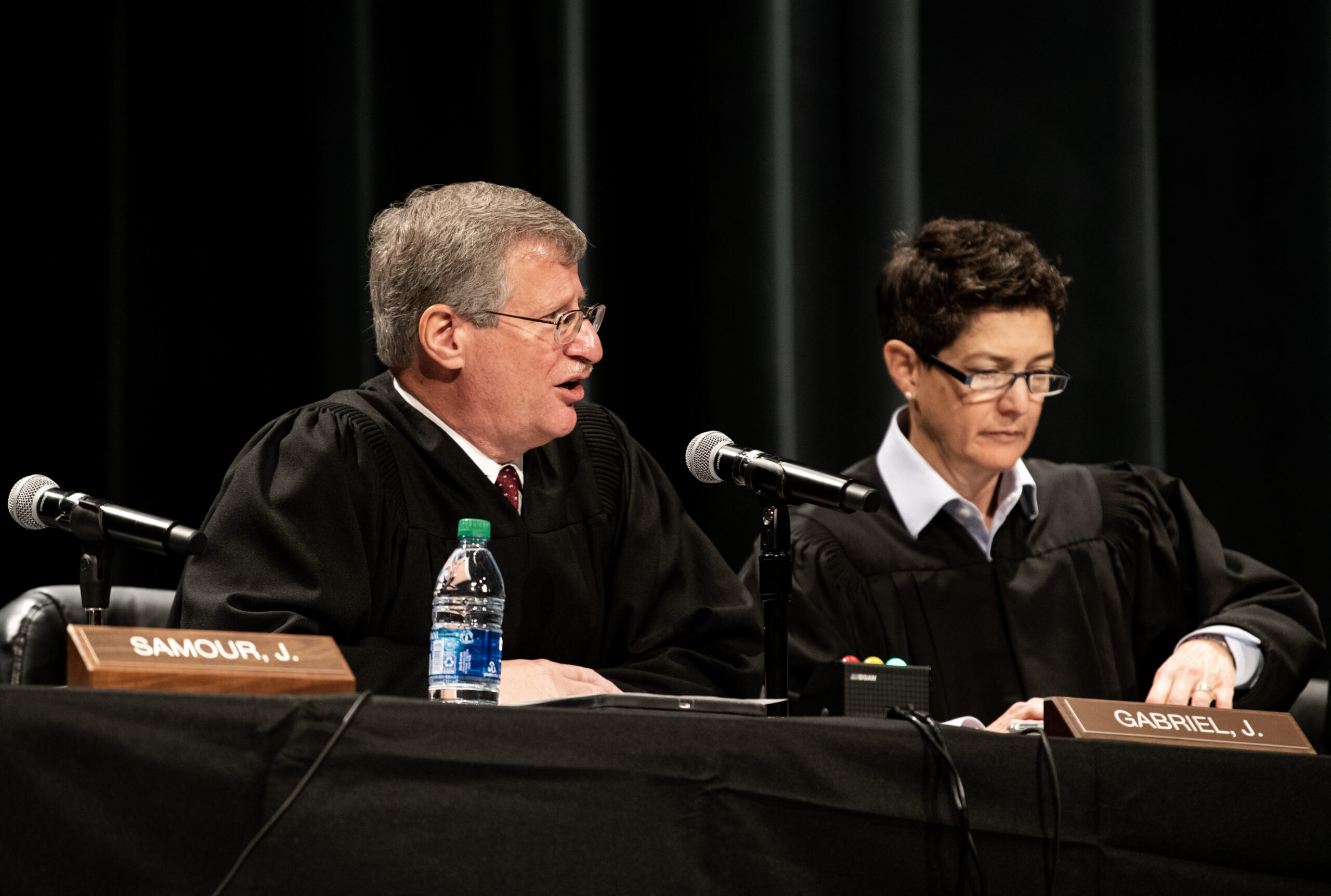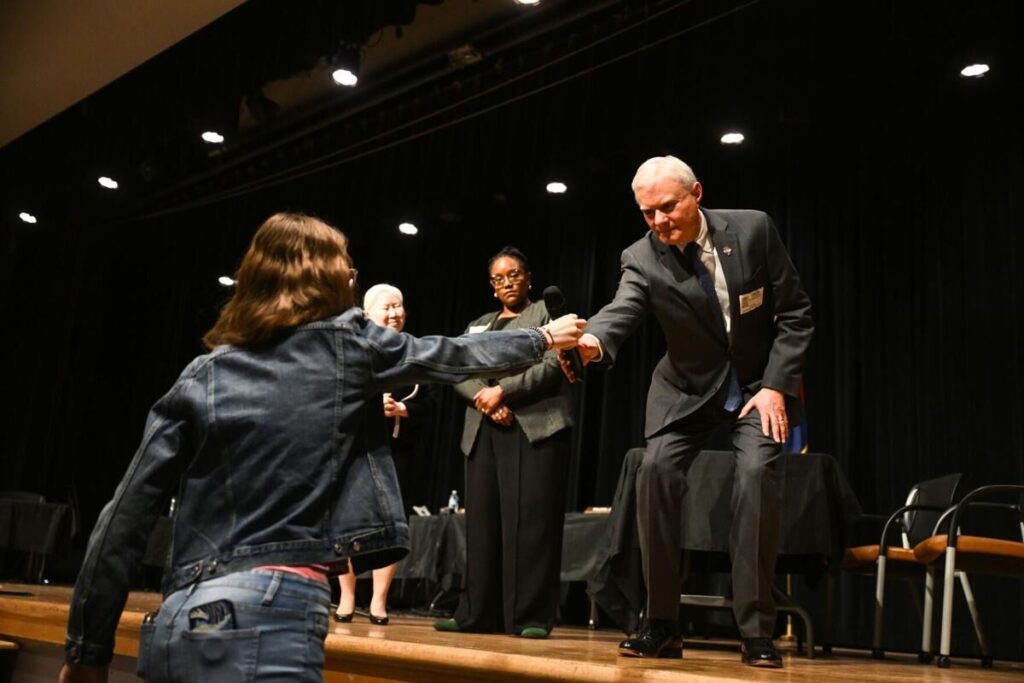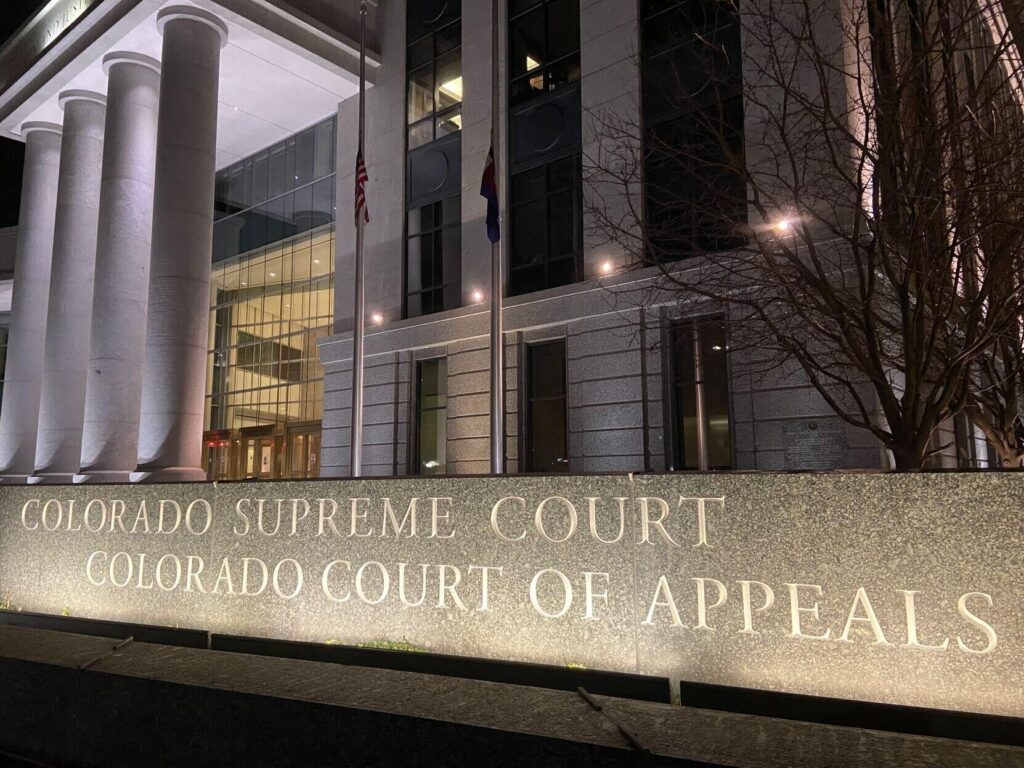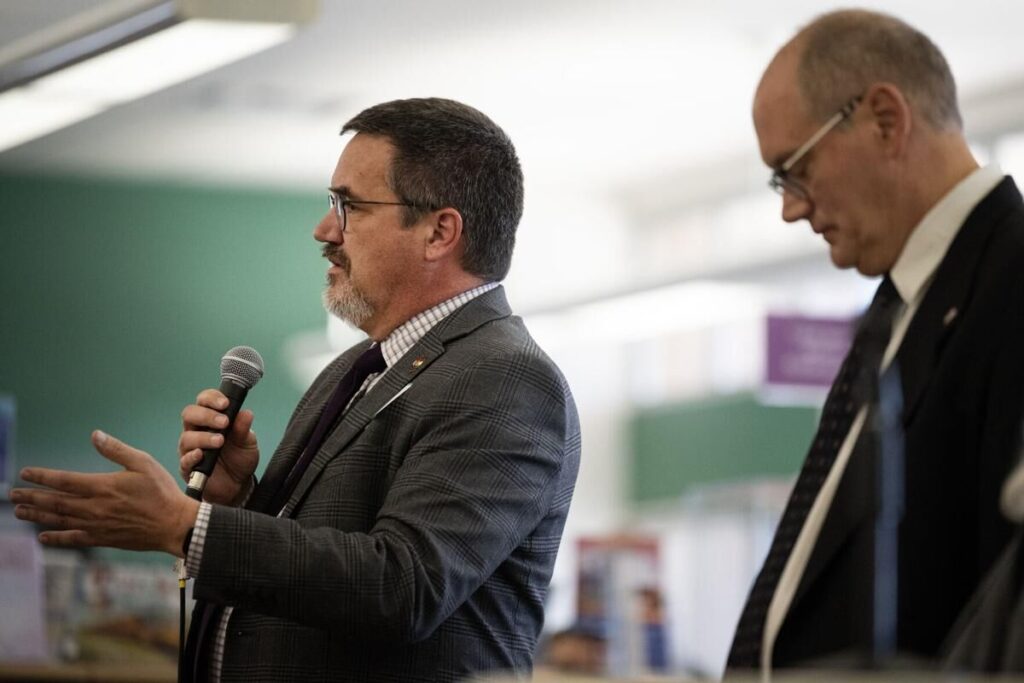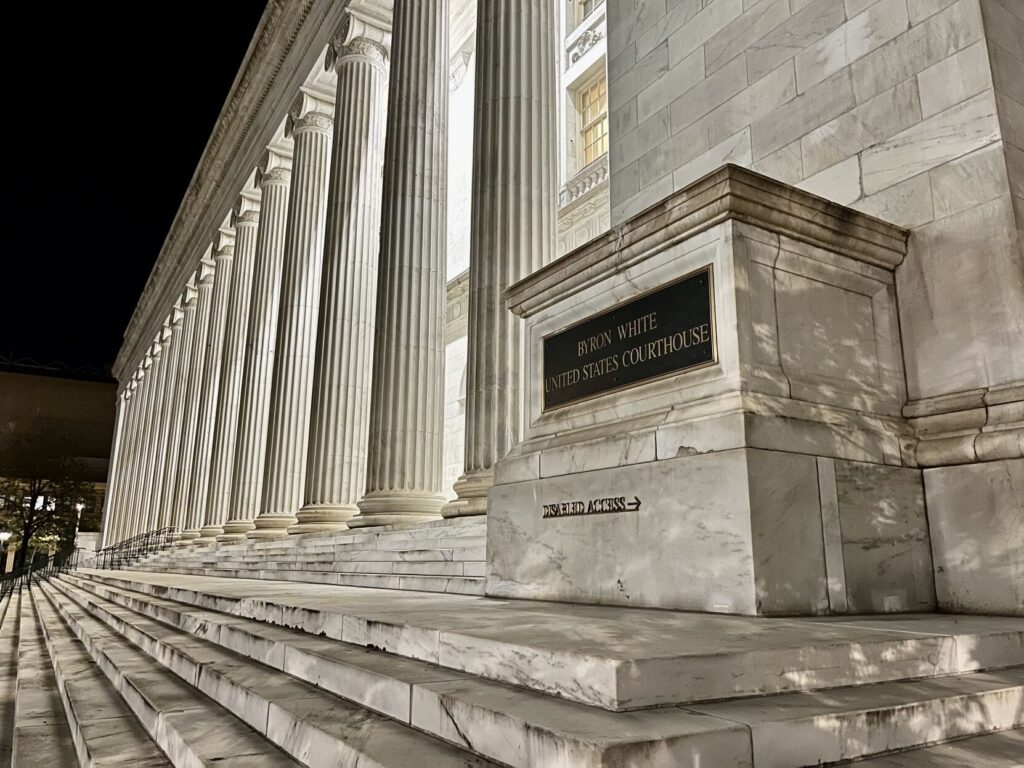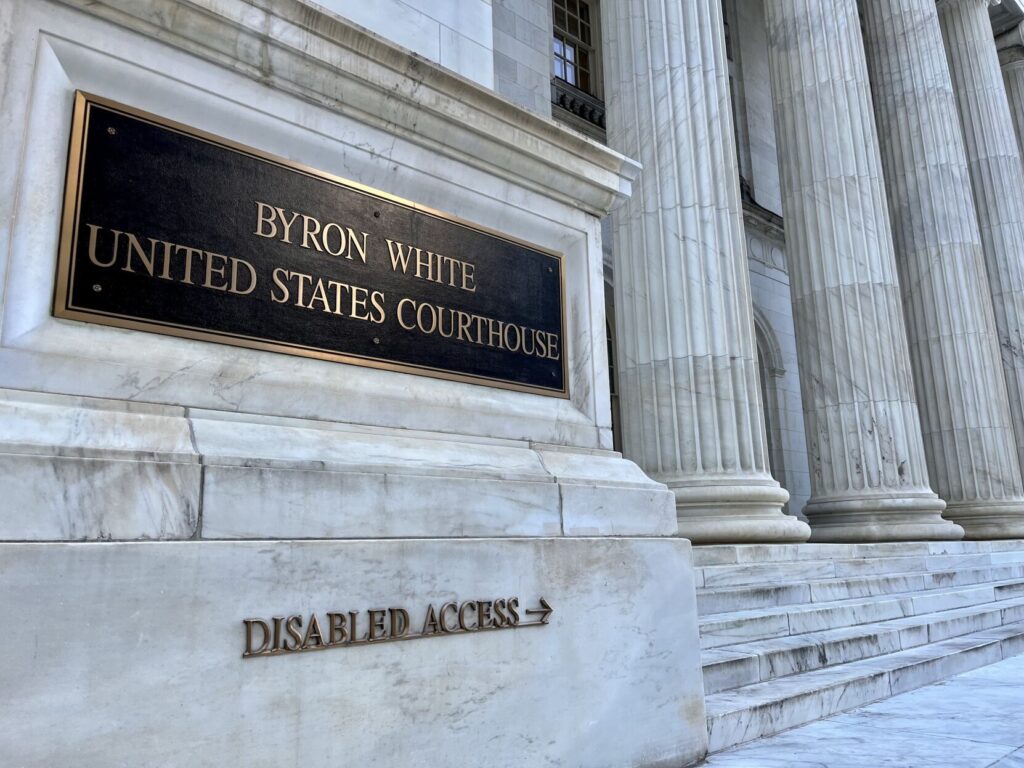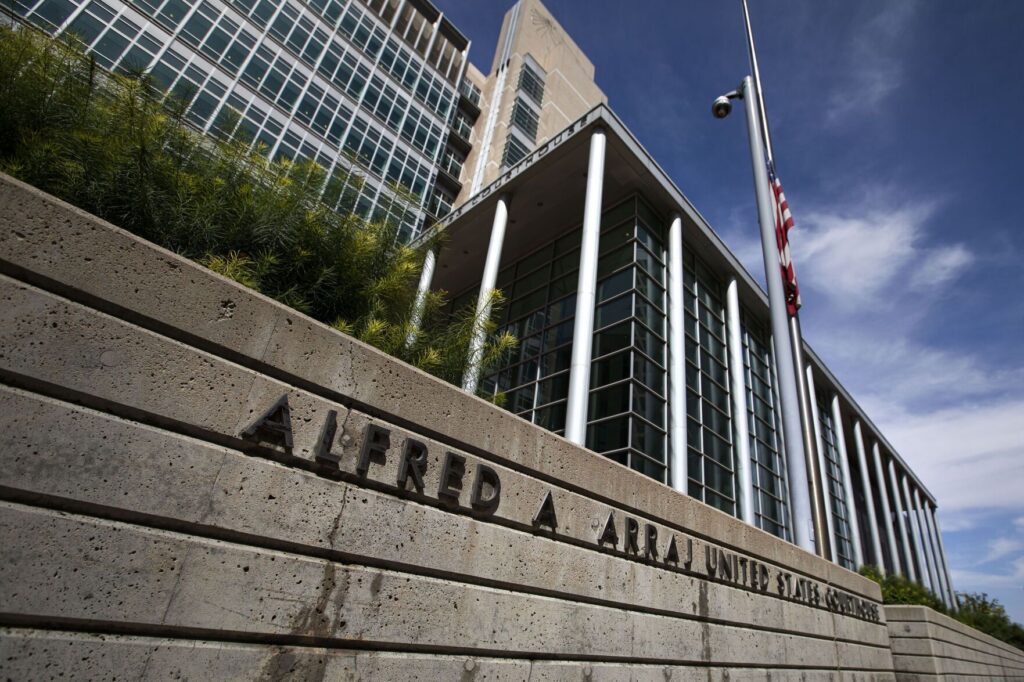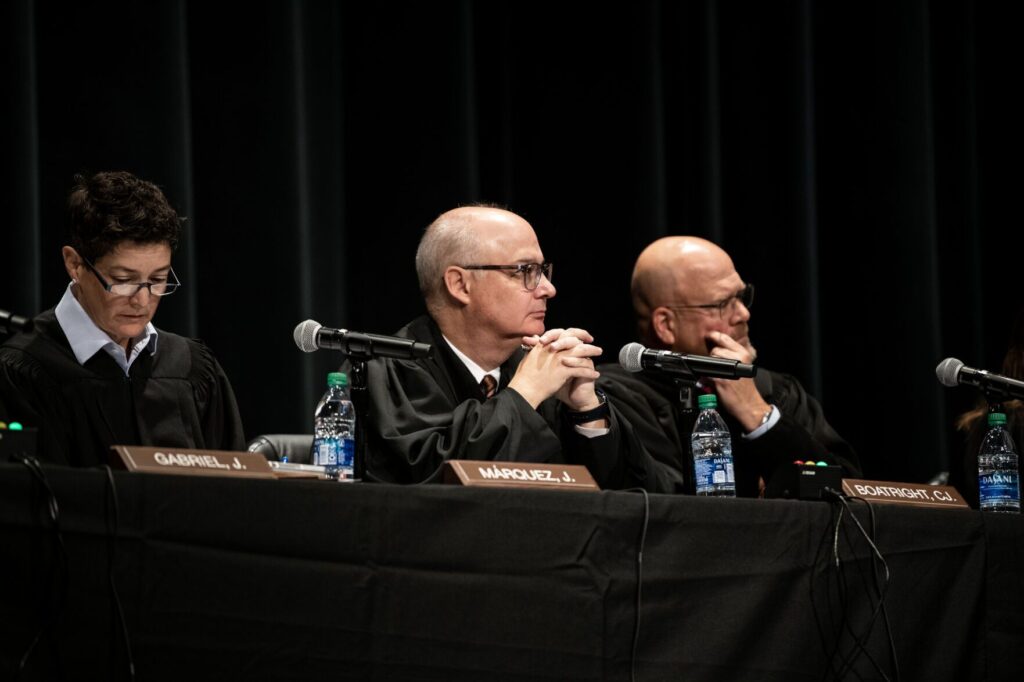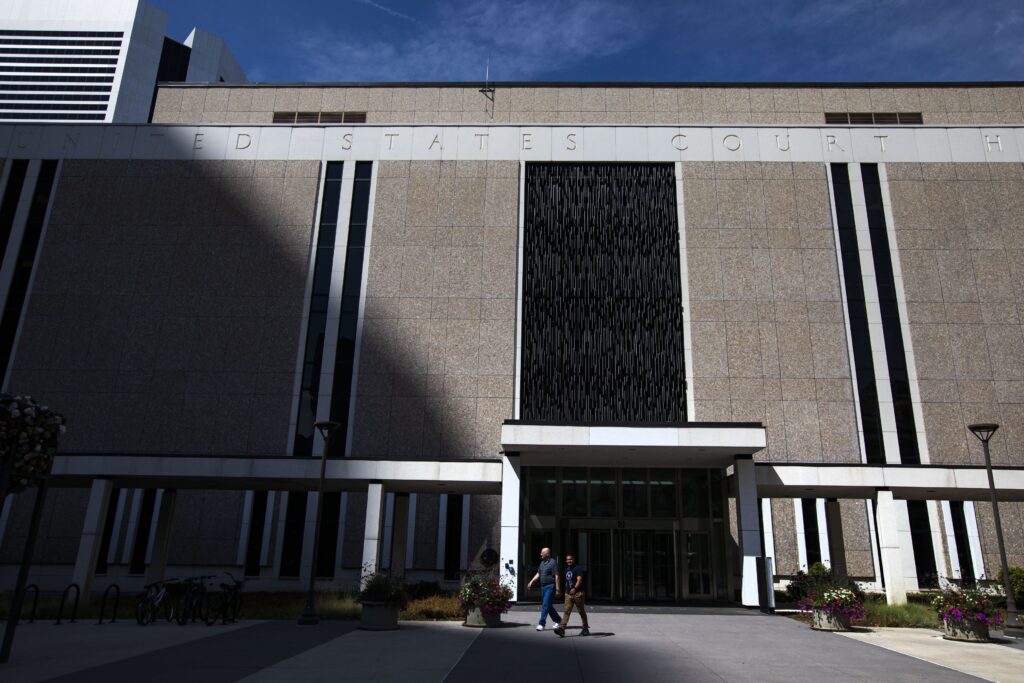State Supreme Court hears cases on sleeping juror, ‘straw purchase’ law
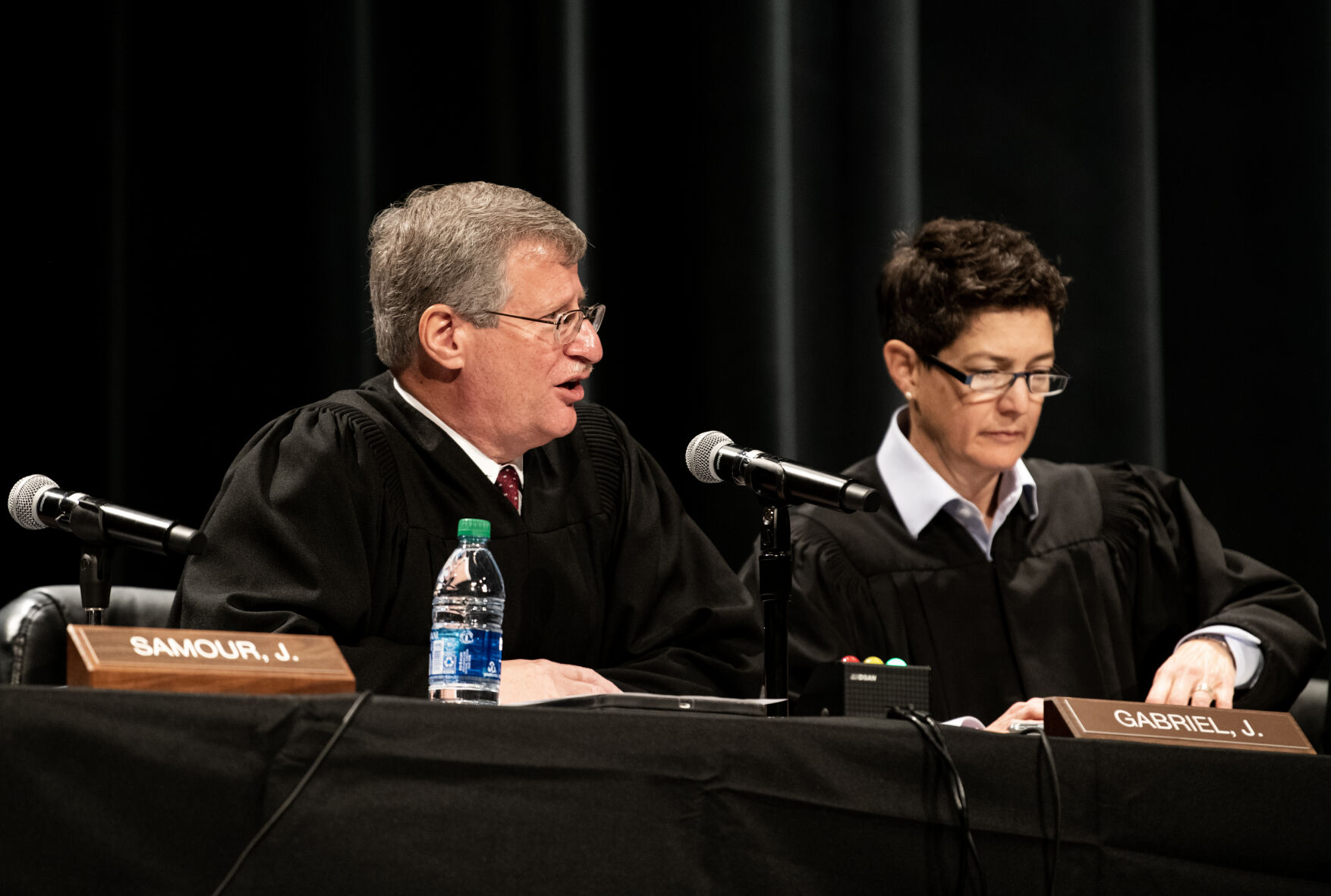
The Colorado Supreme Court traveled to Colorado Springs to hear two cases on Thursday, exploring whether a sleeping juror implicated a defendant’s constitutional right to a jury of 12, and whether there was sufficient evidence to convict a woman for violating the state law that prohibits “straw purchases” of firearms.
Oral arguments at Pine Creek High School, which took place before an audience of students, were part of the judicial branch’s Courts in the Community initiative. Sophomore, junior and senior students reviewed the case materials beforehand and were allowed to ask questions of the lawyers following oral arguments.
Joseph Rausch, a social studies teacher who helped organize the event, said that heading into the arguments, the students held mixed views about the interpretation of the gun purchase law, in which the litigants disputed a key, undefined term in the two-decade-old statute.
“They were pretty unanimous on the idea that a sleeping juror isn’t fair,” Rasuch said of the second case. “That was pretty clear.”
The members of the Supreme Court, similarly, expressed concerns about the fairness of having a juror asleep during a criminal trial – but also harbored doubts about how Elliott J. Forgette’s defense attorney handled the circumstances.
Forgette stood trial in Denver for a 2015 burglary. The second morning of the trial, during the defense’s cross-examination of a witness, then-District Court Judge Kenneth M. Laff called the lawyers over to discuss a timing issue. The prosecutor then volunteered that one juror, identified as Juror 7, was asleep, “and has been for about the last five minutes.”
Laff called a recess and did not address the issue further. However, in the afternoon, after the cross-examination of another witness, the lawyers approached Laff.
Juror 7 was asleep again, the defense attorney told the judge.
“Yes, he does appear to be dozing off,” Laff acknowledged. “I think he is with us sometimes. I’ve been trying to keep an eye on him and I certainly have tapped the microphone, which usually works.”
But at that moment, the judge continued, “he does seem to be eyes closed and being on sand.”
Forgette’s attorney responded, “I’m just concerned because I don’t know if the court observed how long he’s been asleep.” According to Laff’s law clerk, Juror 7 had been asleep for approximately five minutes.
“OK,” Forgette’s lawyer said. “Can we try to rouse him now?”
Instead, Laff called another recess. There was no further mention of Juror 7’s sleeping during the trial. The jury convicted Forgette of second-degree burglary and he received a 12-year prison sentence.
Forgette then appealed, arguing the Colorado Constitution provided him the right to a trial by a jury of 12. A juror who fell asleep repeatedly during the evidence effectively created a jury of 11, Forgette contended, and resulted in a violation of his constitutional rights.
In February 2021, a three-judge panel of the state’s Court of Appeals stopped short of considering the merits of that argument. Forgette’s attorney never lodged an objection to the sleeping juror, the panel noted, and had consequently relinquished Forgette’s right to have the issue reviewed.
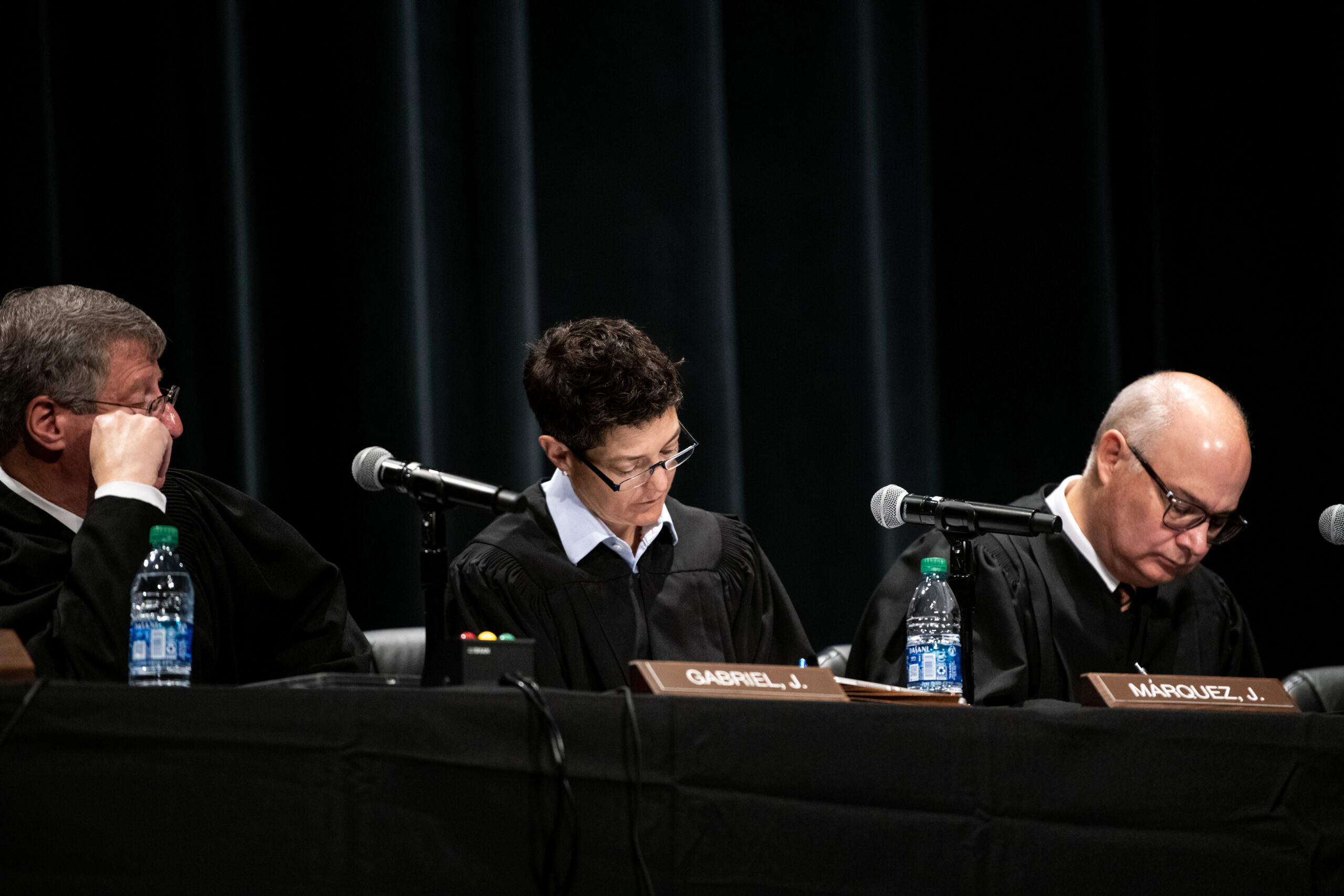
During oral arguments, the Supreme Court leaned into the appellate court’s finding that Forgette never objected to the sleeping juror.
“When I was on the trial court bench, it was not all that unusual to see people dozing off from time to time,” said Justice Carlos A. Samour Jr. “A lawyer might say something, but if if there’s not a request, there’s not a ruling that’s required.”
“A part of the premise of your argument is that there is a constitutional right to a jury of 12 here,” Justice Richard L. Gabriel told Forgette’s attorney. “How is that right implicated in this case? There was a jury of 12 seated. There was a jury of 12 who deliberated. There was a jury of 12 who reached a verdict.”
Deputy State Public Defender Jacob B. McMahon responded that the constitutional right envisions having “12 minds assessing the evidence.” In order to convict someone based on the evidence, a juror first has to be awake for the evidence, McMahon elaborated, saying Juror 7 was not simply distracted or zoned out.
“There’s a huge difference between being a distracted driver,” he said, “versus being asleep at the wheel. Unconsciousness means you have no capacity to process the evidence.”
McMahon advocated for the Supreme Court to hold that when a trial judge acknowledges there is a sleeping juror, but fails to investigate further or take corrective action, it is a structural error that so fundamentally affects the fairness of the trial that it requires reversing a conviction.
While the justices were wary of adopting McMahon’s proposal, they were equally critical of the underlying circumstances in the case.
“Here we have somebody who’s sent to prison for 12 years and one of the jurors was not able to process all the information at trial because everyone agrees for five to 10 minutes, at least, the juror was asleep,” said Justice William W. Hood III.
“Why isn’t it on the judge to ensure that 12 jurors are paying attention and the defendant is receiving a fair trial?” Samour pressed.
The government responded that the statements of Forgette’s trial attorney did not depict someone who was concerned about the constitutional implications of a sleeping juror.
“I don’t think there’s any way to interpret it other than she is fine with what’s going on,” said Senior Assistant Attorney General William G. Kozeliski.

The Supreme Court, which currently includes four former trial judges, nonetheless appeared to believe a judge has some obligation to intervene, even in the absence of a defendant’s objection.
“It seems to me in reading other cases that have involved sleeping jurors, very consistently the trial court judges in these cases have done what this judge did not do, which is to ask the juror what did they miss and to take other corrective action,” said Justice Melissa Hart.
Following the arguments, students quizzed the attorneys on the specifics of the case. One student asked McMahon if his proposed principle would “outlaw all types of sleeping” in court, including a 30-second “snooze.”
“Is 30 seconds too much? I said, yeah, because the whole idea is a jury is supposed to decide what is important evidence. And you have to hear all of it,” McMahon replied.
The case is Forgette v. People.
In the other case heard on Thursday, an Adams County jury convicted Sylvia Johnson of violating a gun safety law enacted in 2000 after the Columbine High School massacre. The law prohibits people from knowingly purchasing a firearm on behalf of a person who is prohibited from owning one, known as a straw purchase. It also outlaws the purchase of a gun for the purpose of transferring it to a prohibited person.
However, there is no definition of “transfer” in the law.
On March 12, 2017, Johnson visited a pawnshop with her partner, Jaron Trujillo, who could not possess a firearm because he was a convicted felon. Surveillance footage showed Johnson and Trujillo shopping together, although Johnson made the purchase on her own.
Days later, police responded to Johnson’s apartment, where Trujillo was outside smoking. Trujillo was barred by a protection order from being there, and an officer arrested him. Trujillo acknowledged he had Johnson’s gun in his pocket while she was at work.
Prosecutors charged Johnson with violating the law, accusing her of purchasing the weapon with an intent to transfer it to Trujillo. Johnson countered that the gun was for her family’s protection, and she kept it in her closet. She conceded that Trujillo knew where she stored the gun.
During deliberations, the jury submitted a question about the “legal definition” of transfer. The trial judge and the attorneys discussed possible responses, but ultimately the jury was told no statutory definition existed, and jurors would have to rely on their existing instructions.
The jury convicted Johnson.
On appeal, Johnson argued there was insufficient evidence to convict her of intending to transfer the gun to Trujillo. The Court of Appeals disagreed, finding the evidence could show Johnson kept the gun where she and Trujillo had “shared possession.” Moving it back and forth between themselves would constitute a transfer.
But the Supreme Court justices were unsure that access alone amounted to a transfer.
“I buy (a gun) for the family and my 22-year-old son has access to it. It’s there in the house,” Hart said hypothetically. “Did I transfer it to him?”

Assistant Solicitor General Joseph G. Michaels argued that Johnson committed the offense at the time she purchased the gun with the intent to transfer it.
“If I’m sitting at home with my partner and my partner is ineligible to own a firearm, and I own a firearm,” Michaels said, “I can’t give that firearm over to my partner and say, ‘Let’s share this together.’ That’s a transfer.”
Johnson’s attorney, Patrick R. Henson, believed “transfer” was ambiguous under the law. But even with the ordinary meaning of the word, what Johnson did was not a transfer of the gun.
“I don’t think when we speak that way we envision putting a gun in a closet knowing someday my husband may need to use this, is the same as saying, ‘I’m buying it for transfer,'” Henson said.
Afterward, a student questioned the attorneys about whether the transfer occurred at the pawnshop or in the closet. Michaels said Johnson purchased the gun with the intent to transfer it to Trujillo, making the pawnshop the proper location of the crime.
“We keep talking about the closet, so why does the closet matter? Every crime, you have to form a mental element,” Henson countered. “How do you know what’s going on in someone’s head? You look at what happened after the fact.
“She put it in her own closet,” he continued. “That doesn’t create a transfer.”
The case is Johnson v. People.
